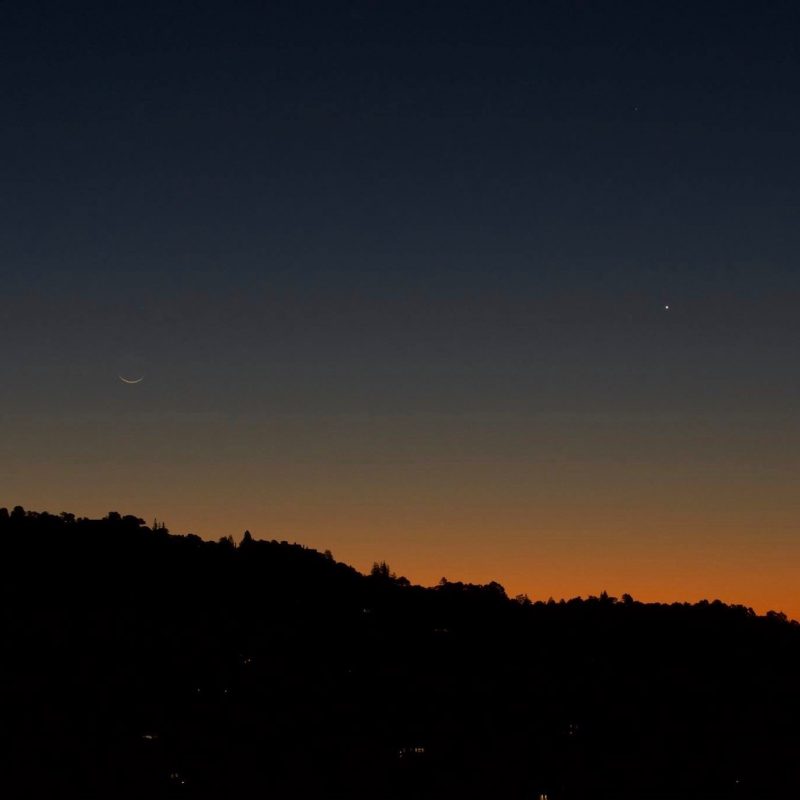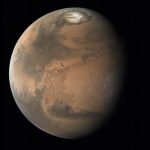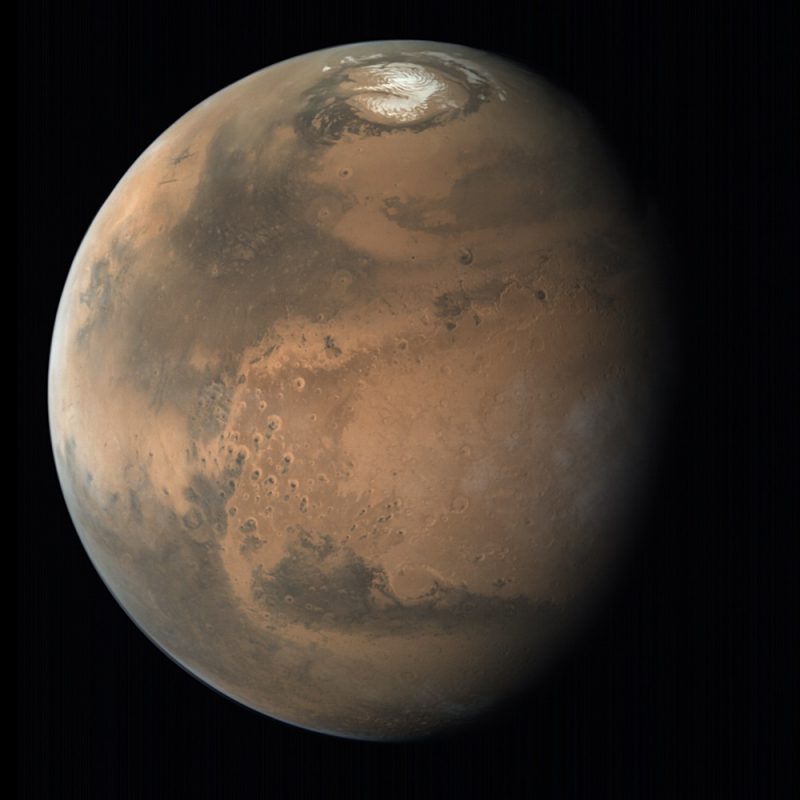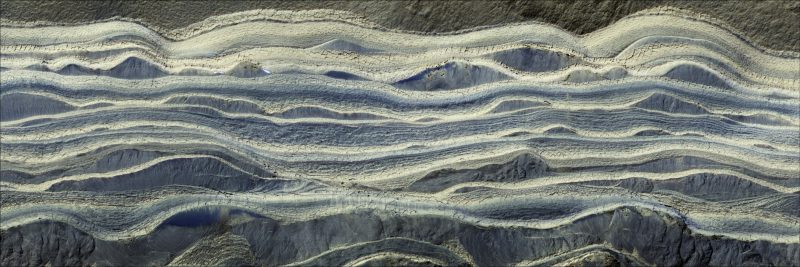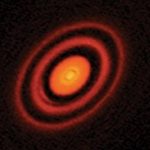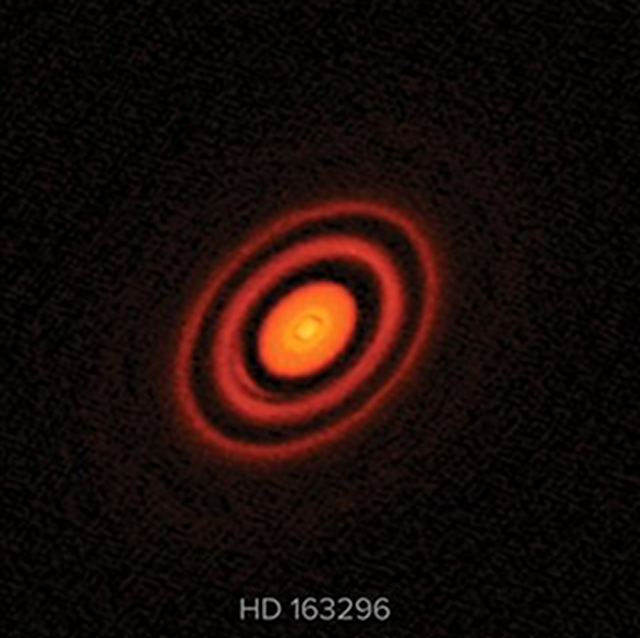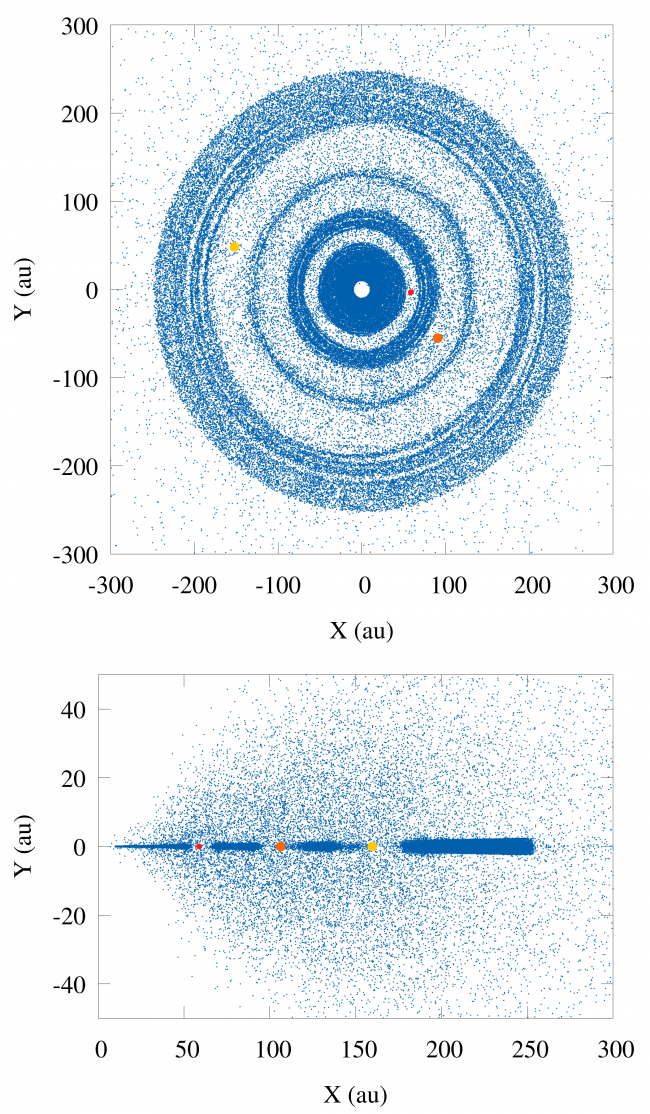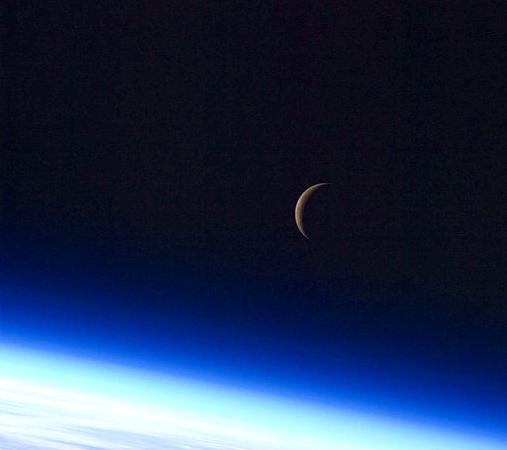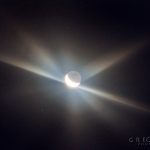“Cancer has a way of evolving and adapting,” says Dr Mariam Jamal-Hanjani, a cancer doctor and researcher at the Cancer Research UK Lung Cancer Centre of Excellence. “When tumours are under selection pressures, for example as a result of cancer treatment, they can develop new features that allow them to become resistant and, therefore, more aggressive.”
Advanced cancers have often spread to other parts of the body. And it’s these secondary tumours that reach and compromise vital organs like the brain or lungs that can ultimately lead to death.
To tackle aggressive cancers, scientists need to understand how they evolve, spread and become resistant to treatment. But as cancer progresses and patients become more unwell, it becomes increasingly difficult to study.
Doctors might ask a patient for permission to use tissue removed during surgery for research. But when cancer has spread to multiple locations, or to somewhere that might not be possible to operate on or obtain a biopsy from, it isn’t possible to collect these gifts of precious tissue.
But now, thanks to an even greater gift to research, patients with advanced cancers are leaving a different type of legacy.
In new research, 10 patients with advanced breast cancer chose to donate their bodies after their death. Their gift allowed Cancer Research UK scientists in Cambridge to collect multiple samples of advanced cancer in all the places it had spread to – up to 37 tumours in a single patient. They analysed these samples to unravel how the cancers spread and developed treatment resistance, publishing their in-depth picture in the journal Cell Reports.
“It’s really an unprecedented view of lethal cancers,” says study lead Professor Carlos Caldas, from the Cancer Research UK Cambridge Institute.
Talking about death
Studies like this, and a larger national study called PEACE, involve collecting samples from patients after death and can sometimes require delicate conversations. For some patients the subject of death is a difficult one for many reasons, and patients are aware of the fact that their participation in studies like PEACE will not benefit themselves.
Despite how sensitive the topic is, patients often want to contribute to the research supported by PEACE, which is funded by Cancer Research UK. And they remain its biggest advocates.
“The truth is, even before PEACE existed I would often have patients ask me: ‘Is there anything I can do for science? Can I donate my body to research?’” recalls Jamal-Hanjani, who is the Principal Investigator for PEACE at the lead centre, UCL Cancer Institute.
“Our patients still want to give something of themselves to help cancer research, knowing that they won’t benefit, but that future patients might. It’s incredibly humbling.”
In these circumstances, a strong doctor-patient relationship is key to an open and honest conversation. Understanding how the patient feels is the main steer for doctors in whether to discuss participating in PEACE.
Although it can be intimidating, Jamal-Hanjani believes this is something doctors need to become more comfortable with. “In treating patients with cancer especially, we as doctors have to overcome that stigma, because patients do think about death and we need to allow them to speak freely with us.”
And these patients’ contribution can be invaluable in helping those who come after them.
Decoding cancer spread
Cancer evolution has become one of the big topics in research. Studies are analysing tumours from when they are first discovered and throughout treatment.
Now, samples collected after death are helping to understand the hardest to treat stages of some cancers. Caldas and his team compared multiple tumours collected from patients who had died from breast cancer that had become resistant to treatment.
The results paint a more comprehensive picture of how closely related tumours can be, retracing the steps that led to these cancers growing and spreading. Caldas says the results are unexpected.
“Our work suggests something rather extraordinary: that cancer spread is not a continuous process. It seems to happen in waves,” he says. Rather than new tumours appearing one after the other, each wave involves a group of cancer cells creating new tumours in several organs at the same time.
These could be cells breaking away from the primary tumour, or from elsewhere in the body where cancer cells can remain hidden and dormant for sometimes years.
“Even in patients who have a lot of secondary tumours,” adds Caldas, “cancer appears to have spread in as few as two or three of these waves.”
What triggers these waves? Could there be ‘pauses’ between them when cancer is unlikely to spread? Answers to these questions could change the way patients are monitored.
“This is just starting to open the book,” Caldas says. “There is a lot more to be learned from studies like this.”
The PEACE study is on a much larger scale: 150 patients have already volunteered in the first 2 years of the study. The research will focus on themes that scientists struggle to study without access to advanced cancer samples, like why certain cancers readily spread to specific organs but not others.
Coming together
Narrowing down the research questions to ensure these precious samples are used for the best possible research is an important aspect of PEACE.
A project of this scale also involves an element of unpredictability that represents a huge challenge for Jamal-Hanjani. Often, it’s a patient’s family who notifies the PEACE team that their loved one has died. An entire team must then come together very quickly, including researchers, laboratory staff, pathologists, mortuary technicians and clinical nurses.
“I would say that is far more challenging than talking to patients about death and about the PEACE study,” Jamal-Hanjani says.
Yet she feels a sense of responsibility. “Ultimately, we make a promise to the patient when they are alive, and we want to fulfil the living wish of our patients,” she says.
“We want our patients to know that even after they die, we will treat them with dignity and respect. We are very privileged to receive their samples and to be able to do the research we do.”
Paying it forward
As we start to better understand the behaviour of advanced cancers, PEACE and other post-mortem studies continue to centre on the people affected. For those who take part, this is their legacy.
“The vast majority of patients want to help other patients,” says Jamal-Hanjani. “I think that’s just the nature of human beings.”
That legacy will support many ongoing research projects focusing on several types of cancers, including lung, kidney, skin and breast, to name a few. Not only that, but samples will also be stored so that PEACE can contribute to future research projects. “It’s about the research we can do now, but also the research we can offer future doctors and scientists,” says Jamal-Hanjani.
Daimona Kounde is a science media officer at Cancer Research UK
Reference
De Mattos-Arruda, L, et al. (2019) The Genomic and Immune Landscapes of Lethal Metastatic Breast Cancer. Cell Reports. DOI:10.1016/j.celrep.2019.04.098

from Cancer Research UK – Science blog http://bit.ly/2QvYYLU

“Cancer has a way of evolving and adapting,” says Dr Mariam Jamal-Hanjani, a cancer doctor and researcher at the Cancer Research UK Lung Cancer Centre of Excellence. “When tumours are under selection pressures, for example as a result of cancer treatment, they can develop new features that allow them to become resistant and, therefore, more aggressive.”
Advanced cancers have often spread to other parts of the body. And it’s these secondary tumours that reach and compromise vital organs like the brain or lungs that can ultimately lead to death.
To tackle aggressive cancers, scientists need to understand how they evolve, spread and become resistant to treatment. But as cancer progresses and patients become more unwell, it becomes increasingly difficult to study.
Doctors might ask a patient for permission to use tissue removed during surgery for research. But when cancer has spread to multiple locations, or to somewhere that might not be possible to operate on or obtain a biopsy from, it isn’t possible to collect these gifts of precious tissue.
But now, thanks to an even greater gift to research, patients with advanced cancers are leaving a different type of legacy.
In new research, 10 patients with advanced breast cancer chose to donate their bodies after their death. Their gift allowed Cancer Research UK scientists in Cambridge to collect multiple samples of advanced cancer in all the places it had spread to – up to 37 tumours in a single patient. They analysed these samples to unravel how the cancers spread and developed treatment resistance, publishing their in-depth picture in the journal Cell Reports.
“It’s really an unprecedented view of lethal cancers,” says study lead Professor Carlos Caldas, from the Cancer Research UK Cambridge Institute.
Talking about death
Studies like this, and a larger national study called PEACE, involve collecting samples from patients after death and can sometimes require delicate conversations. For some patients the subject of death is a difficult one for many reasons, and patients are aware of the fact that their participation in studies like PEACE will not benefit themselves.
Despite how sensitive the topic is, patients often want to contribute to the research supported by PEACE, which is funded by Cancer Research UK. And they remain its biggest advocates.
“The truth is, even before PEACE existed I would often have patients ask me: ‘Is there anything I can do for science? Can I donate my body to research?’” recalls Jamal-Hanjani, who is the Principal Investigator for PEACE at the lead centre, UCL Cancer Institute.
“Our patients still want to give something of themselves to help cancer research, knowing that they won’t benefit, but that future patients might. It’s incredibly humbling.”
In these circumstances, a strong doctor-patient relationship is key to an open and honest conversation. Understanding how the patient feels is the main steer for doctors in whether to discuss participating in PEACE.
Although it can be intimidating, Jamal-Hanjani believes this is something doctors need to become more comfortable with. “In treating patients with cancer especially, we as doctors have to overcome that stigma, because patients do think about death and we need to allow them to speak freely with us.”
And these patients’ contribution can be invaluable in helping those who come after them.
Decoding cancer spread
Cancer evolution has become one of the big topics in research. Studies are analysing tumours from when they are first discovered and throughout treatment.
Now, samples collected after death are helping to understand the hardest to treat stages of some cancers. Caldas and his team compared multiple tumours collected from patients who had died from breast cancer that had become resistant to treatment.
The results paint a more comprehensive picture of how closely related tumours can be, retracing the steps that led to these cancers growing and spreading. Caldas says the results are unexpected.
“Our work suggests something rather extraordinary: that cancer spread is not a continuous process. It seems to happen in waves,” he says. Rather than new tumours appearing one after the other, each wave involves a group of cancer cells creating new tumours in several organs at the same time.
These could be cells breaking away from the primary tumour, or from elsewhere in the body where cancer cells can remain hidden and dormant for sometimes years.
“Even in patients who have a lot of secondary tumours,” adds Caldas, “cancer appears to have spread in as few as two or three of these waves.”
What triggers these waves? Could there be ‘pauses’ between them when cancer is unlikely to spread? Answers to these questions could change the way patients are monitored.
“This is just starting to open the book,” Caldas says. “There is a lot more to be learned from studies like this.”
The PEACE study is on a much larger scale: 150 patients have already volunteered in the first 2 years of the study. The research will focus on themes that scientists struggle to study without access to advanced cancer samples, like why certain cancers readily spread to specific organs but not others.
Coming together
Narrowing down the research questions to ensure these precious samples are used for the best possible research is an important aspect of PEACE.
A project of this scale also involves an element of unpredictability that represents a huge challenge for Jamal-Hanjani. Often, it’s a patient’s family who notifies the PEACE team that their loved one has died. An entire team must then come together very quickly, including researchers, laboratory staff, pathologists, mortuary technicians and clinical nurses.
“I would say that is far more challenging than talking to patients about death and about the PEACE study,” Jamal-Hanjani says.
Yet she feels a sense of responsibility. “Ultimately, we make a promise to the patient when they are alive, and we want to fulfil the living wish of our patients,” she says.
“We want our patients to know that even after they die, we will treat them with dignity and respect. We are very privileged to receive their samples and to be able to do the research we do.”
Paying it forward
As we start to better understand the behaviour of advanced cancers, PEACE and other post-mortem studies continue to centre on the people affected. For those who take part, this is their legacy.
“The vast majority of patients want to help other patients,” says Jamal-Hanjani. “I think that’s just the nature of human beings.”
That legacy will support many ongoing research projects focusing on several types of cancers, including lung, kidney, skin and breast, to name a few. Not only that, but samples will also be stored so that PEACE can contribute to future research projects. “It’s about the research we can do now, but also the research we can offer future doctors and scientists,” says Jamal-Hanjani.
Daimona Kounde is a science media officer at Cancer Research UK
Reference
De Mattos-Arruda, L, et al. (2019) The Genomic and Immune Landscapes of Lethal Metastatic Breast Cancer. Cell Reports. DOI:10.1016/j.celrep.2019.04.098

from Cancer Research UK – Science blog http://bit.ly/2QvYYLU

